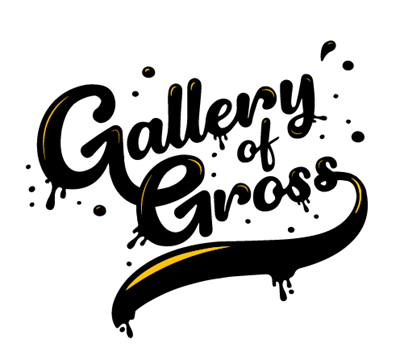Gallery of Gross
|
|
|
Weak stomachs be warned...
Welcome to our Gallery of Gross!
|
|
|
Lower Molonglo Water Quality Control Centre Sewage Screens
This is the first place our sewage goes when it enters the Lower Molonglo Water Quality Control Centre. The screens try and catch anything greater than 3 mm in diameter, but sometimes bigger objects manage to get through - we’ve even had a nappy slip past! Wet wipes are tricky for the screens and often cause blockages. Once they clump together and trap other objects, the only solution is for our Blockage Busters to get inside and pull them all out.
We macerate everything caught on the screens. Once the waste has been softened, we dispose of the resulting goop.
Lower Molonglo Water Quality Control Centre Bioreactor
The bioreactor is where we send your wastewater after it’s been mixed with micro-organisms. Oxygen is pumped into the tank so that these organisms can continue to clean the wastewater.
This process helps remove anything that may hurt the environment and turns our waste back into water, which then flows downstream.
Lower Molonglo Water Quality Control Centre Sludge Holding Tank
Sludge is a substance produced throughout the treatment process. It’s formed when poo begins to stick together. This tank holds that sludge before it’s turned into Agri-Ash. Unfortunately, wet wipes often get inside the tank and clog things up. Our Blockage Busters then need to get inside and pull it all out.
Lower Molonglo Water Quality Control Centre Wet Well
The wet well holds wastewater after it enters our treatment plant. Rubbish, like wet wipes, can build up inside this well and cause issues for our equipment. Our Blockage Busters need to do regular cleanings to remove all the garbage that shouldn’t be in our sewage. This involves them actually climbing inside and digging through the muck.
Check out the images below to see our Blockages Busters prepping for the wet well clean. Next, we’ll show you what it actually looks like inside!
Fyshwick Sewer Pump Station
We use pump stations to help move sewerage through the system when gravity just isn’t enough. The Fyshwick Sewer Pump Station collects waste from the surrounding suburbs and shifts it towards our Lower Molonglo Water Quality Control Centre.
Wet wipes are a real issue for this pump station. They can form big clumps that fill the well and must be removed by hand. That’s why you should always bin wet wipes, rather than flushing them down the toilet!
Commonwealth Avenue Pump Station
Did you know there’s a place in Canberra where we send sewerage over a bridge? The Commonwealth Avenue Pump Station helps us move wastewater across the lake without having to use underwater pipelines.
This station often catches wet wipes and other rubbish. Our Blockage Busters then have to get inside and pull it all out. Check it out for yourself in the gallery below!
The Vortex
When it comes to moving wastewater, we usually let gravity do all the work. Sometimes, however, we need the sewage to reach a lower elevation quite quickly - this is where a vortex comes in. They work just like the drain in your bathtub. Wastewater is made to swirl around the edges of a silo so that we can control how quickly the sewage drops.
The West MacGregor Vortex, with its 20-metre drop, is one of our largest. Check it out below!
Acton Syphon
The Acton Syphon helps filter some of our waste on the way to the Lower Molonglo Water Quality Control Centre. It houses a large screen that catches things like wet wipes. The syphon helps to stop bigger blockages occurring further down the pipeline.
Our Blockage Busters can only get inside the syphon during low traffic periods – like when everyone's asleep! As a result, our Blockage Busters often get to work before the sun comes up.




